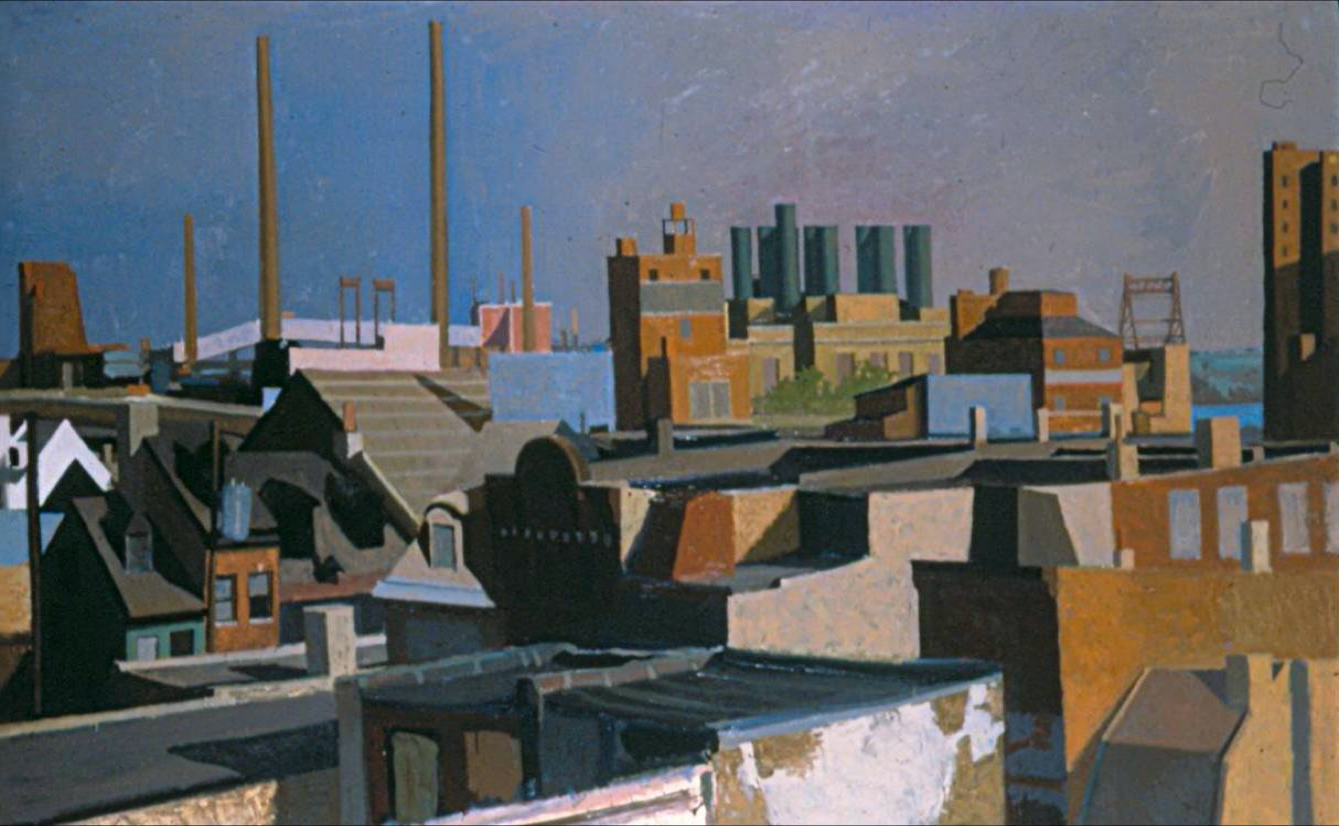
Shackamaxon #1. Oil on canvas. 72 x 96 inches. 1982. Private collection, Philadelphia.
In the summer of 1982, Victoria Davila and I relocated from Saratoga Springs, New York (back) to Philadelphia. A property had been acquired in the Queen Village section of the city, which was in the midst of extensive renovations.
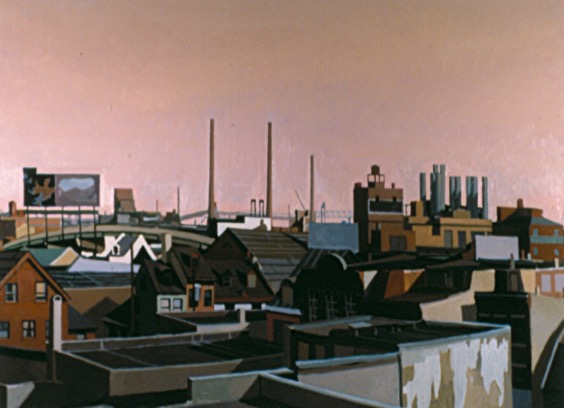
(Left: Shackamaxon #2. 72 x 96 inches. 1982. Private collection, Philadelphia)
During the construction process we rented a top-floor apartment on the 300 block of Brown Street in the Northern Liberties neighborhood. Its one redeeming amenity was a tiny back deck overlooking a sea of rooftops that stretched toward Penn Treaty Park on the Delaware River. Piercing the skyline were the soaring smokestacks of Shackamaxon power-station. In the indigenous language Saukim-uch-heen-in meant “Chief-making place;” a place where the Lenni-Lenape performed investiture ceremonies for new leaders.Once an independent township, the area was soon swallowed up by the city’s expansion north, along the Delaware. In 1982 the neighborhood suffered from urban blight. Urban pioneers bought properties, invested in renovation projects, and transformed a nest of crumbling buildings into a fashionable neighborhood.
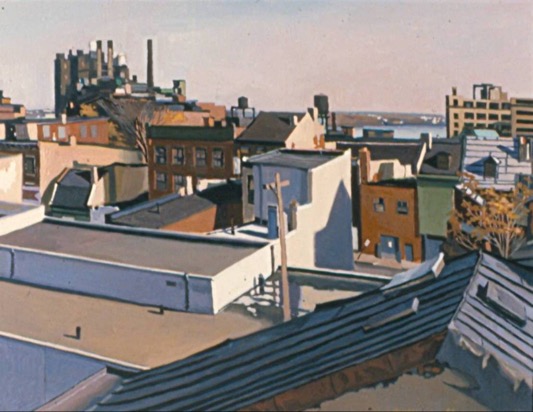
(Left: Northern Liberties. Overlooking American Street. Oil on canvas. 36 x 36″ 1982. Collection Wm. Moennig. Philadelphia
Having painted landscapes in upstate New York, Maine and New Mexico, I came to regard these rustbelt vistas as curiously organic. Cities are designed to be viewed at street-level. Meanwhile, random bric-a-brac litters tarpaper rooftops punctuated by chimneys, heat-pumps, skylights and pipe-vents. The laissez-faire mayhem of building-tops invited comparison with coral reefs, subterranean rock formations, murderous vines, or a skin-rash. After moving into a newly-renovated home and studio in South Philadelphia, I continued to mine the urban landscape for ideas. Painting New Mexican mountains, mesas and canyons helped me to develop a vocabulary for painting an American city. Beauty abided not so much in what I beheld, but in discovering an unintended cityscape. This in turn led me to understand the natural world in a new way, as a perpetual work in progress.
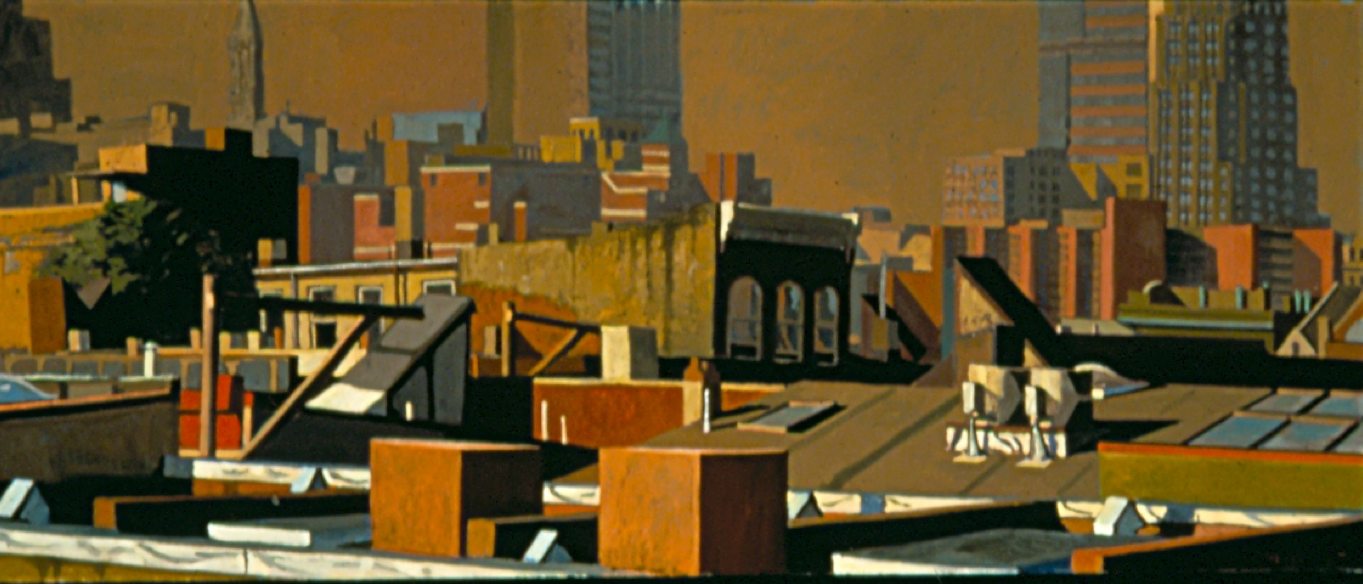 Part of the City. Oil on Canvas 24 x 72 inches. 1985
Part of the City. Oil on Canvas 24 x 72 inches. 1985
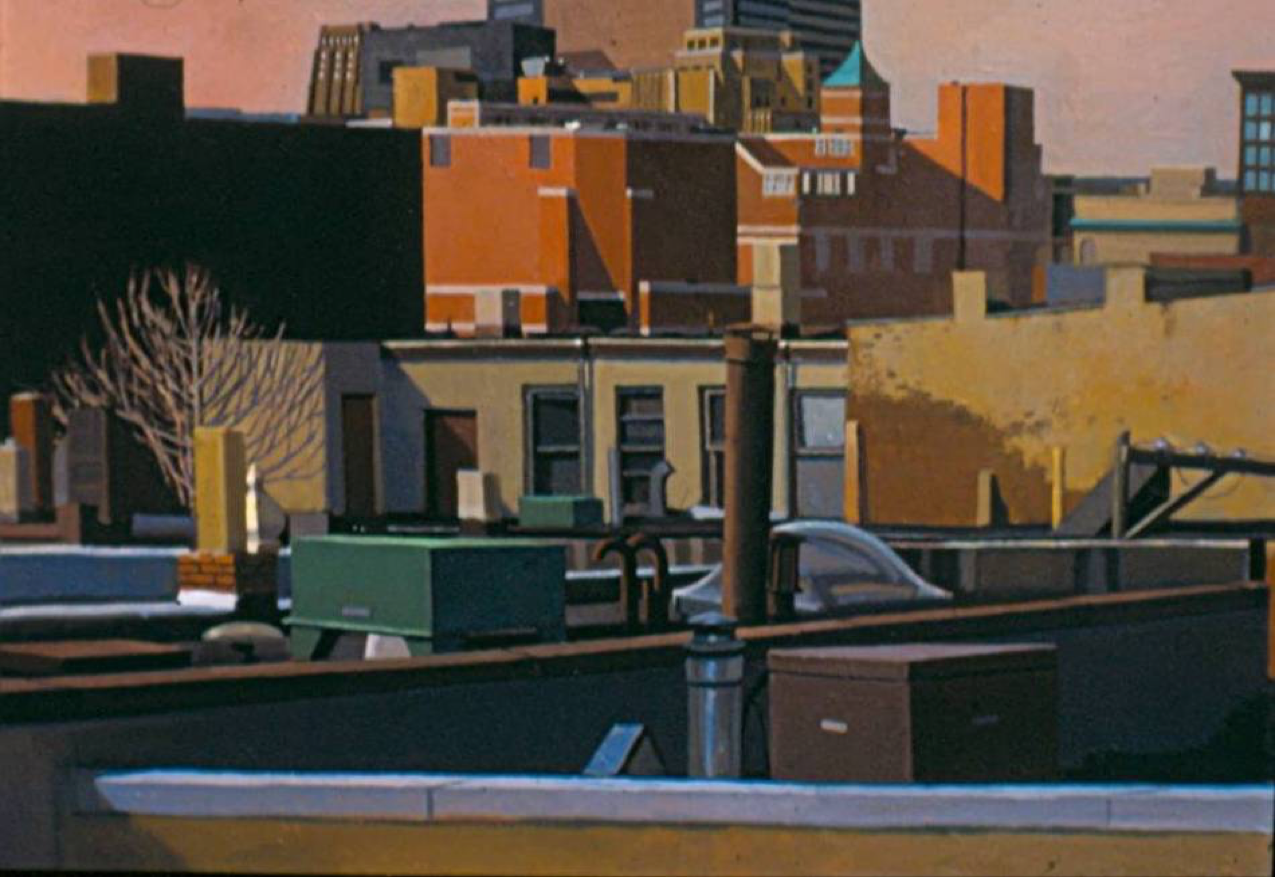 Part of the City: Queen Village. Oil on canvas. 50 x 66 inches, 1985
Part of the City: Queen Village. Oil on canvas. 50 x 66 inches, 1985
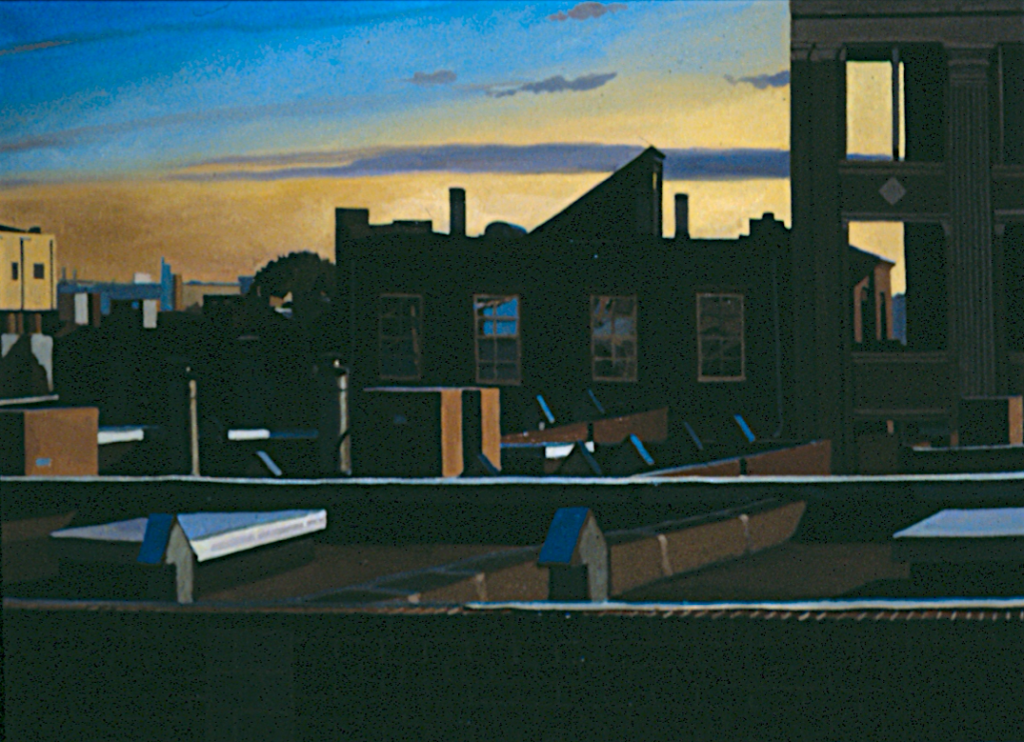 Part of the City: Ruined Hebrew School at Sunset. Oil on canvas 50 x 66 inches. 1984
Part of the City: Ruined Hebrew School at Sunset. Oil on canvas 50 x 66 inches. 1984